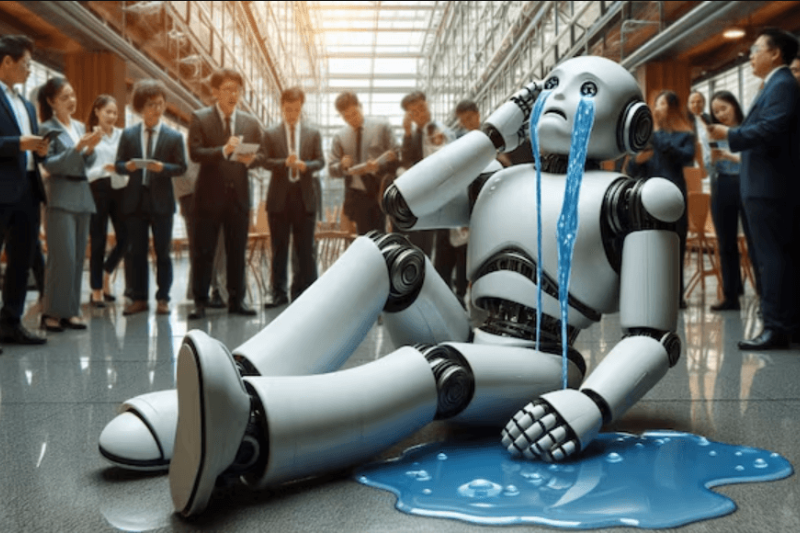

Investigating the alleged “suicide” of a robot hired by the Gumi City Council sets South Korea at the middle of an odd and disturbing dilemma. Not only another industrial tool, this especially crafted robot was a valuable member of the office staff handling document delivery. Maintaining office productivity and workflow depended on the document delivery function, hence the presence of the robot is rather important in the workplace.
The sudden death of the robot has ignited a worldwide debate. News stories highlight the robot’s odd actions before falling down a staircase; some observers have described it as “circling in one spot” and as appearing “confined.” These specifics have spurred rumors that the robot might have given in to some kind of work-related stress, resulting in the dramatic phrase “robot suicide” being thrown about headlines.
Renowned for its quick adoption of robotics in many different fields, South Korea is currently debating the consequences of this event. Aiming to increase production and solve labor shortages, the nation has been leading the way in including robots into daily life and business surroundings. Inspired by the Gumi City Council’s document-delivery robot, robots in South Korea are not only limited to manufacturing floors but also increasingly finding place in service sectors, healthcare, and administrative tasks.
The Research Although the precise reason the robot is malfunctioning is still under research, the issue of whether work pressure may influence a machine begs questions. This episode clarifies the changing interaction between people and machines in the workplace. Robots doing increasingly difficult tasks begs issues regarding their programming, limits, and even possible need for protections against too demanding activities.
Robotic and artificial intelligence experts contend that essentially pre-programmed instructions drive robots and lack mind or emotions. Consequently, the idea of a robot going through stress similar to human job-related stress is practically unreal. But the malfunction of the Gumi City Council’s robot could point to possible programming or maintenance problems requiring attention.
Though it might not expose a real “suicide,” the research in Gumi City has surely started an important conversation about the direction of employment and the welfare of our robotic colleagues. Ensuring their correct operation and quickly fixing any faults becomes crucial as robots are more involved in many different employment sectors. This event emphasizes the requirement of strong programming, frequent maintenance, and maybe even the necessity of a monitoring system to find and correct robotic behavior deviations.
Furthermore, this scenario emphasizes how much more research and development robotics need to improve their dependability and performance. The conversation about the Gumi tragedy could result in better operational rules and safety measures for robots in the workplace, therefore reducing future occurrence of such events.
The “robot suicide” episode in South Korea acts as a wake-up call for the world on the inclusion of robots into the labor. Though the word “suicide” might be a misnomer, the fundamental problems with programming, maintenance, and operational stress on machines are really genuine. Resolving these issues is vital since we depend more on automation to augment human activities.
By appreciating and looking at these events, we can open the path for a time when people and robots live peacefully in the workplace, each helping to increase output and efficiency free from unanticipated accidents. Apart from determining what went wrong, the continuous research at Gumi City aims to discover how to stop such events in the future so guaranteeing a better and safer integration of robots into our daily life.
Former President Donald Trump is taking legal action to strike down one of the topics on the forgotten list of…
As U.S. retailers like Walmart and Costco pursue alternatives to Chinese and Bangladeshi suppliers due to rising tariffs, India's garment…
U.S. worker productivity declined for the first time in almost three years in the first quarter of 2025, in a…
According to the Ministry of Health, Labour and Welfare in March 2025, Japan's inflation adjusted real wages fell by 2.1%…
BluSmart Mobility, once viewed as India’s green ride-hailing alternative, ceased operations in April 2025 leaving nearly 10,000 drivers unemployed without…
The India-UK Free Trade Agreement (FTA), recently learnt, has attracted some attention for one of its benefits enabling Indian workers…
This website uses cookies.
Read More